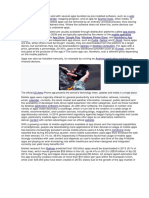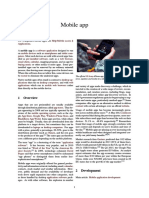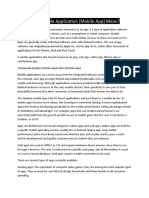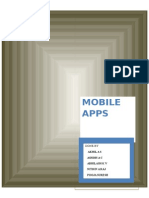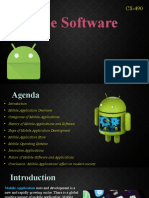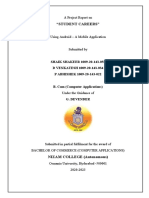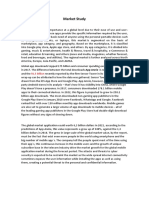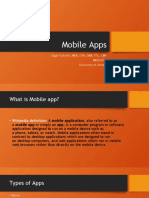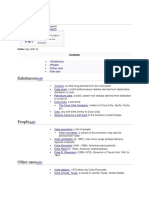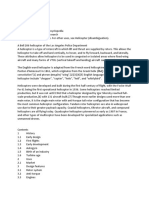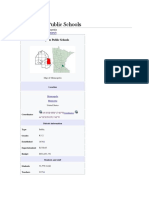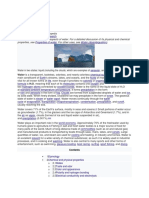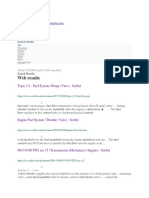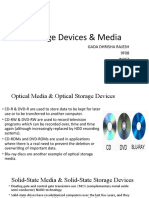A mobile app or mobile application is a computer program or software application designed to run
on a mobile device such as a phone/tablet or watch. Apps were oiginally intended for productivity
assistance such as Email, calendar, and contact databases, but the public demand for apps caused
rapid expansion into other areas such as mobile games, factory automation, GPS and location-
based services, order-tracking, and ticket purchases, so that there are now millions of apps
available. Apps are generally downloaded from application distribution platforms which are operated
by the owner of the mobile operating system, such as the App Store (iOS) or Google Play Store.
Some apps are free, and others have a price, with the profit being split between the application's
creator and the distribution platform.. Mobile applications often stand in contrast to desktop
applicationswhich are designed to run on desktop computers, and web applications which run
in mobile web browsers rather than directly on the mobile device.
In 2009, technology columnist David Pogue said that newer smartphones could be nicknamed "app
phones" to distinguish them from earlier less-sophisticated smartphones.[1] The term "app", short for
"software application", has since become very popular; in 2010, it was listed as "Word of the Year"
by the American Dialect Society.[2]
Contents
1Overview
2Development
3Distribution
o 3.1Google Play
o 3.2App Store
o 3.3Microsoft Store
o 3.4Others
4Enterprise management
o 4.1App wrapping vs. native app management
5See also
6References
7External links
Overview
Most mobile devices are sold with several apps bundled as pre-installed software, such as a web
browser, email client, calendar, mapping program, and an app for buying music, other media, or
more apps. Some pre-installed apps can be removed by an ordinary uninstall process, thus leaving
more storage space for desired ones. Where the software does not allow this, some devices can
be rooted to eliminate the undesired apps.
Apps that are not preinstalled are usually available through distribution platforms called app stores.
They began appearing in 2008 and are typically operated by the owner of the mobile operating
system, such as the Apple App Store, Google Play, Windows Phone Store, and BlackBerry App
World. However, there are independent app stores, such as Cydia, GetJar and F-Droid. Some apps
are free, while others must be bought. Usually, they are downloaded from the platform to a target
device, but sometimes they can be downloaded to laptops or desktop computers. For apps with a
price, generally a percentage, 20-30%, goes to the distribution provider (such as iTunes), and the
rest goes to the producer of the app.[3] The same app can, therefore, cost a different price depending
on the mobile platform.
Apps can also be installed manually, for example by running an Android application package on
Android devices.
� We ask you, humbly, to help.
Hi reader in the U.S., it seems you use Wikipedia a lot; that's great! It's a little
awkward to ask, but this Tuesday we need your help. If you have already donated,
we sincerely thank you. We’re not salespeople, but we depend on donations
averaging $16.36 and fewer than 1% of readers give. If you donate just $2.75, the
price of your coffee this Tuesday, Wikipedia could keep thriving. Thank you.
MAYBE LATER
CLOSE
The official US Army iPhone app presents the service's technology news, updates and media in a single place
Mobile apps were originally offered for general productivity and information retrieval, including
email, calendar, contacts, the stock market and weather information. However, public demand and
the availability of developer tools drove rapid expansion into other categories, such as those handled
by desktop application softwarepackages. As with other software, the explosion in number and
variety of apps made discovery a challenge, which in turn led to the creation of a wide range of
review, recommendation, and curation sources, including blogs, magazines, and dedicated online
app-discovery services. In 2014 government regulatory agencies began trying to regulate and curate
apps, particularly medical apps.[4] Some companies offer apps as an alternative method to
deliver content with certain advantages over an official website.
Usage of mobile apps has become increasingly prevalent across mobile phone users.[5] A May
2012 comScore study reported that during the previous quarter, more mobile subscribers used apps
than browsed the web on their devices: 51.1% vs. 49.8% respectively.[6] Researchers found that
usage of mobile apps strongly correlates with user context and depends on user's location and time
of the day.[7] Mobile apps are playing an ever-increasing role within healthcare and when designed
and integrated correctly can yield many benefits.[8][9]
Market research firm Gartner predicted that 102 billion apps would be downloaded in 2013 (91% of
them free), which would generate $26 billion in the US, up 44.4% on 2012's US$18 billion.[10] By Q2
2015, the Google Play and Apple stores alone generated $5 billion. An analyst report estimates that
the app economy creates revenues of more than €10 billion per year within the European Union,
while over 529,000 jobs have been created in 28 EU states due to the growth of the app market.[11]
Development
